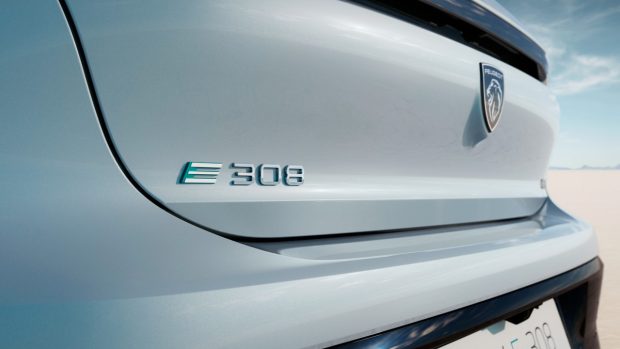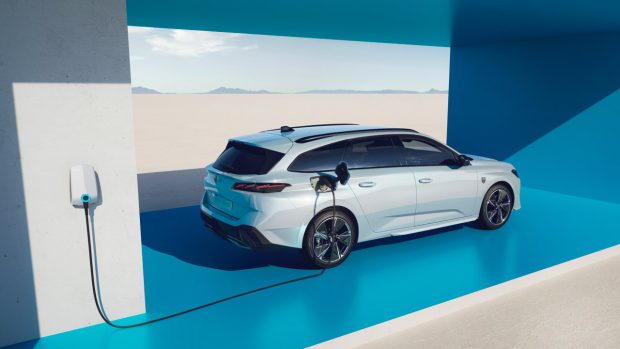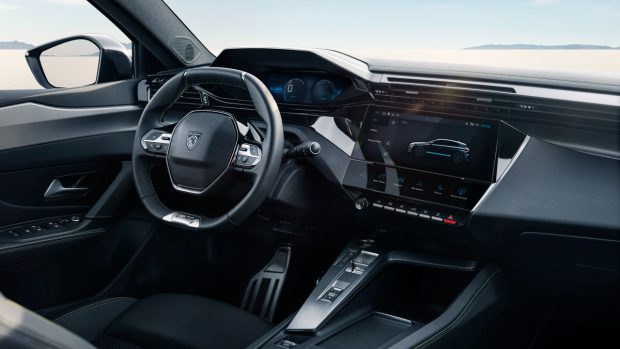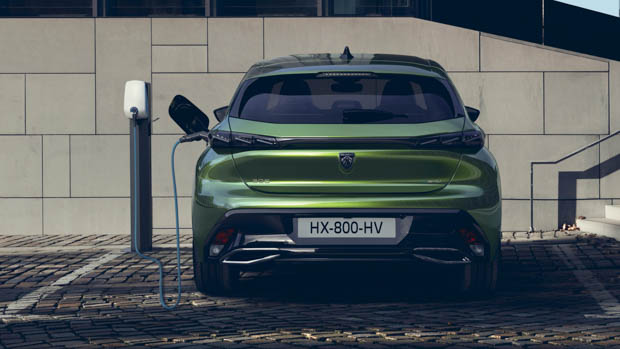-
Car Reviews
- All reviews
- Midsize SUVs
- Small cars
- Utes
- Small SUVs
- Large SUVs
- Large cars
- Sports SUVs
- Sports cars
- Vans
Latest reviews
- Car News
-
Car Comparisons
Latest comparisons
- Chasing Deals
Electric version of Peugeot’s family hatch and wagon revealed in Europe with “over 400km” WLTP range and an Australian release possible
Peugeot revealed electric versions of its 308 hatch and wagon last night, with both body styles boasting over 400km of WLTP range from a 51kWh usable battery.
Although ‘only’ 400km, the e-308 achieves its range by being very energy efficient. Testing on the WLTP combined cycle saw the fully-electric 308 return 12.7kWh/100km.
The Peugeot’s efficiency rivals the frugal Tesla Model 3. If it bears out in final testing, the e-308 will be one of the most frugal EVs running on a converted combustion-car platform. Only the likes of the discontinued Hyundai Ioniq Electric that consumed 12.3kWh/100km are better.
The electric 308 will effectively become the flagship of the 308 range in Europe. Australian plans are so-far unclear, though the electric 308 is said to be under study according to managing director of Peugeot Australia, Kate Gillis.
“The global reveal of a full battery electric 308 is exciting and we can confirm the e-308 is under evaluation for the Australian market as part of our electrification journey”, Gillis said.
If the e-308 comes to Australia it will have few direct rivals. Instead, the e-308 would do battle with SUVs such as the MG ZS EV and BYD Atto 3, as well as entry-level Tesla Model Y and Polestar 2.
European pricing for Allure and GT trim e-308s s is yet to be announced. It’s unlikely the 308 will be cheap if it comes to Australia.
Currently, Peugeot’s 3008 PHEV commands a near $20K premium over the equivalent ICE 3008. Expect the e-308’s to start from at least $55K if it comes to Australia.
The remainder of Peugeot’s new 308 range – including turbo petrol and plug-in hybrid grades – is set to hit Australian dealerships between October and December this year.
This new electric 308 marks another step in Peugeot’s gradual electrification that started with the e-208 and e-2008 in Europe. Peugeot currently sells two PHEVs in Australia including 508 and 3008, though no pure EVs.
It may be electric, but the e-308 is not about maximum outputs. There is a single motor powering the front wheels of both hatch and wagon producing 115kW and 260Nm.
That amount of grunt is about right for a small family vehicle, being slightly more than a VW Golf 110TSI. Peugeot is yet to claim a kerb weight or 0-100km/h time for e-308.
The reasonable outputs likely have something to do with the e-308’s excellent efficiency. The current indicative WLTP figure is 12.7kWh/100km equating to 402km from a full charge. WLTP is still calculating final figures.
Peugeot’s 400-volt lithium-ion battery uses a different chemical composition to what you might have seen in earlier packs. The ‘NMC811’ is richer in nickel (80%) with lower reliance on expensive cobalt (10%). There are two goals with this: reduce cost and increase charge capacity.
The e-308’s battery can take on fresh DC electricity at a rate of 100kW, for a 10-80 percent charge time of around 25 minutes. Using a three-phase 11kW wallbox will rejuvenate the battery from 0-100 percent in a little over five hours.
While the e-308 may look very familiar with its ‘fang-shaped’ daytime running lights and matrix LED headlights, there are some new 18-inch alloy wheels said to be more aerodynamic.
Latest news
About Chasing cars
Chasing Cars reviews are 100% independent.
Because we are powered by Budget Direct Insurance, we don’t receive advertising or sales revenue from car manufacturers.
We’re truly independent – giving you Australia’s best car reviews.



